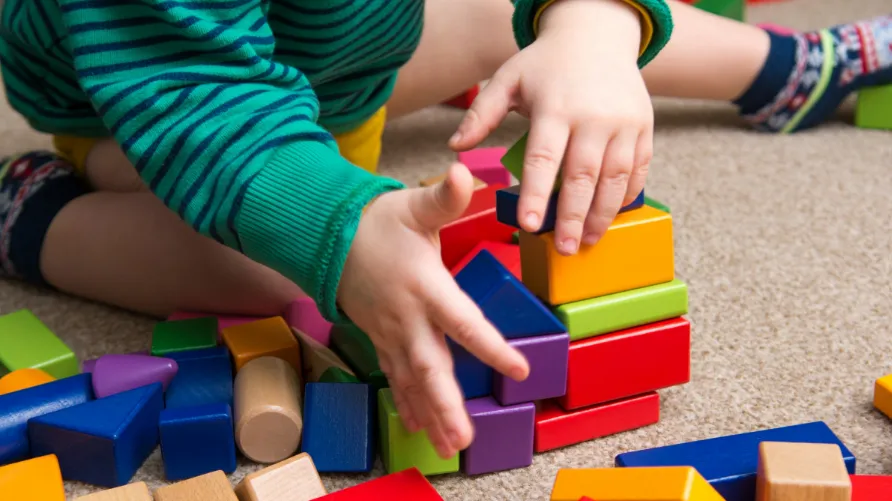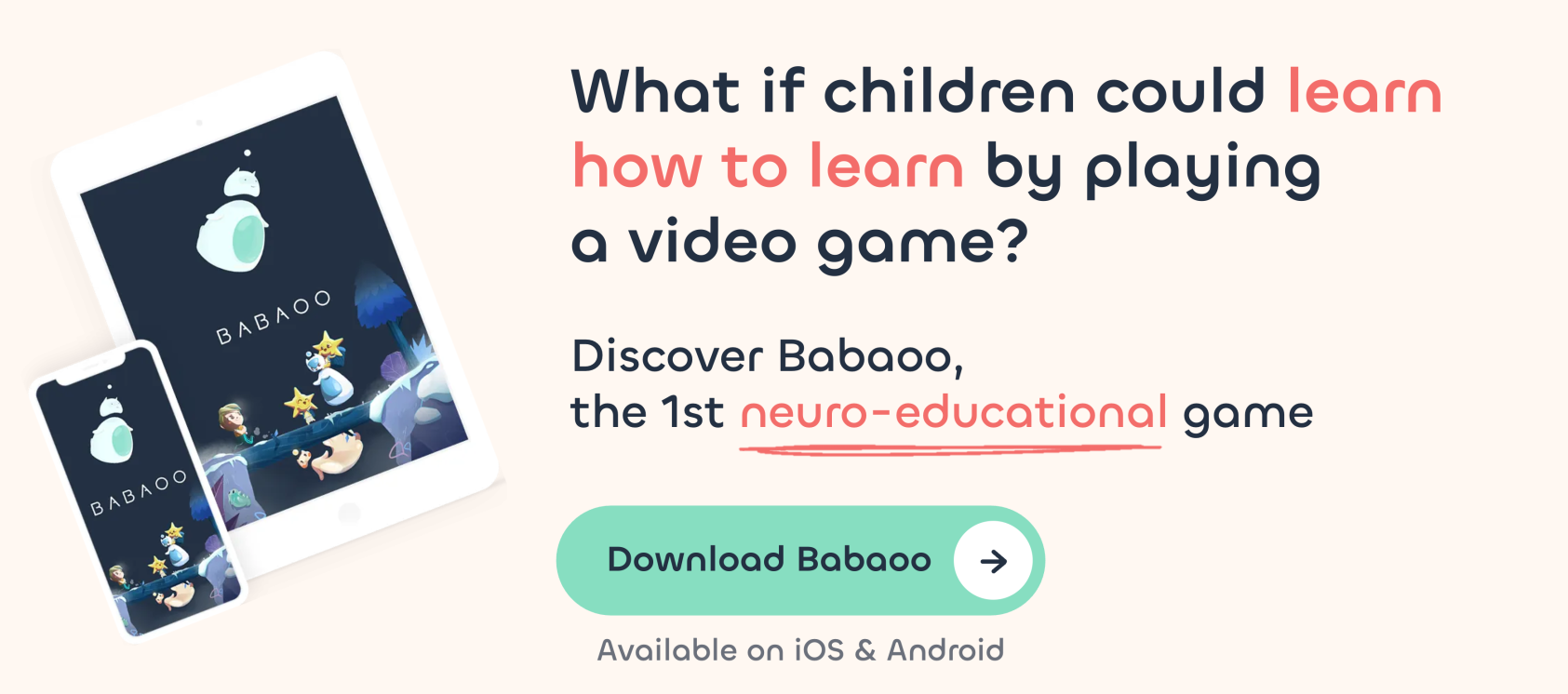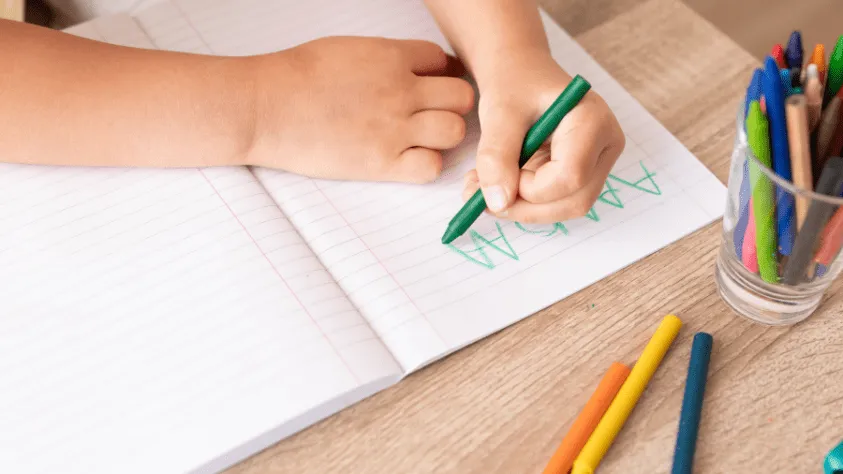
Childhood dysphasia: what is it?

Dysphasia definition
Dysphasia is a specific oral language development disorder, characterized by difficulties in the acquisition and use of language. It is part of the Dys (Neurodevelopmental Disorders) family of disorders. This disorder affects a child’s ability to speak and/or understand, and therefore sometimes to adjust to situations. About 7% of preschool and school-age children are affected by this neurodevelopmental pathology, according to studies conducted in Belgium and Quebec.
There is frequently a secondary impact on the acquisition of written language, i.e. reading (fluency, intonation and comprehension) and spelling. It manifests itself as a persistent delay in language learning on the expressive or comprehension side, or both.
Dysphasia and Developmental Language Disorder: are they the same thing?
Since 2017, dysphasia has been referred to by the broader term Developmental Language Disorder (DLD). This terminology aims to better represent the diversity of difficulties related to language development, focusing on persistent and specific difficulties in children’s language development.
Difference between Dysphasia and Aphasia
While both dysphasia and aphasia refer to language disorders, they have distinct differences. Dysphasia is a partial impairment of language ability, where children may struggle with speaking, understanding, reading, or writing, but retain some degree of language function.
Aphasia, on the other hand, is a condition in which the ability to use or comprehend language is almost entirely lost. In clinical practice, aphasia is often used as a blanket term to describe all language impairments, while dysphasia is considered a milder form.
What are the symptoms of dysphasia in children?
Dysphasia is a complex disorder that manifests itself in many different ways: structuring sentences, producing sounds correctly, making oneself understood effectively or interacting with others can all prove to be real challenges.
Language development delays in young children
Dysphasic children have difficulty learning language on the expressive side. They start speaking later than other children, and experience a prolonged period of silence or stammering before saying their first words. This language delay is one of the first signs to alert parents. Communication (eye contact, facial expressions, social interaction), on the other hand, is preserved and often of good quality, or even highly developed.
✏️ Note: only a complete evaluation by a healthcare professional allows the diagnosis of dysphasia. 🩺
Speech difficulties
Dysphasic children may distort the same word in different ways, or be difficult to understand. Beware, however: having trouble pronouncing certain words – for example, saying “papin” instead of “lapin ‘or ’tamion” instead of “camion” – can be part of the classic trajectory of language development. 🐰 🚚 If you have any concerns, don’t hesitate to seek professional advice and talk to your doctor.
Word-finding difficulties
Dysphasic children often know words, but have trouble finding them when they need them. It’s as if the words are hidden somewhere in their minds. 😶🌫️ For example, a child might want to say “chair” but say “sitting thing” because he can’t find the word “chair”.
He may also propose a word that is phonologically close to the target word (“raclette” for “raquette” or “pédalier” for “pédalo”), or need trial and error before finding the word. Access to the lexicon is slowed and disrupted.
Difficulties in sentence construction
Dysphasia affects the child’s ability to convey the message he or she is trying to convey in correct sentences. For example, instead of saying “I’m eating an apple”, a dysphasic child might say “Apple I’m eating”. 🍏 Sentences lack structure and therefore sometimes cohesion.
Difficulties in understanding others
The spoken chain is processed in real time. This speed of information processing can be complex in children with DLD who are impaired on the comprehension side.
Some dysphasic children have difficulty understanding what others are saying. For example, if someone asks a child “How old are you?” and the child replies “Yes”, this indicates that the child has not fully understood the question. These comprehension difficulties make exchanges more complicated for them.
Working Memory
Working Memory is an Executive Function that enables us to retain and use information while listening or speaking. 🧠
Dysphasic children may forget and fail to process all or part of what they’re told, what they wanted to say, lose the thread of their ideas or structure their words very awkwardly, thus lacking coherence and cohesion in their speech. For example, they may start to tell a story, then forget what happens in the middle and stop abruptly.
Dysphasia: signs that can alert you as a parent
- Absence of words at two years old;
- Absence of sentences at age three;
- Stable communication deficit at age four or five;
- Difficulty finding words that should be part of the child’s vocabulary;
- Inability to produce words or phrases when asked, even if the child can do so spontaneously.
My child doesn’t speak, is he dysphasic?
If your child doesn’t speak yet, it doesn’t necessarily mean he’s dysphasic. He or she may simply have a language delay, which is often temporary. In this case, children start talking later but eventually reach the developmental milestones naturally, without specific intervention.
It’s important to distinguish between :
- A transient lag in language acquisition, for which simple monitoring of spontaneous evolution is sufficient;
- A language delay in which there is not always recovery without follow-up, accompaniment or specific intervention. There may be an illusory recovery around 5-6 years of age, but difficulties reappear later and impact on learning.
Differences with other language disorders
Dysphasia is distinguished from other language disorders, such as :
- ✍️ The dyslexia: it affects reading and writing. Unlike dysphasia, it does not affect oral language production and comprehension.
- 👄 Articulatory disorders: these are characterized by difficulties in pronouncing certain sounds correctly. For example, a child may have difficulty pronouncing certain consonants (“s” and “z”). Unlike dysphasia, these disorders do not affect comprehension or sentence construction, but only the pronunciation of certain sounds.
- 💬 Communication disorders: these are difficulties in using language appropriately, without the syntactic and phonological problems of dysphasia.
- 👂 Hearing disorders: hearing problems can slow language development, but are not linked to the brain’s language-processing mechanisms. In this case, an auditory assessment is suggested to rule out dysphasia.
- 👄 Stammering: this involves involuntary repetition or prolongation of certain syllables or words. An accompaniment with a speech therapist helps to support the stuttering child.
✏ Note : To support the child in learning to speak, try board games such as “Where’s the kitty?” or “The sentence train”. They allow the child to have fun while developing oral language skills.
Who to consult?
Before making an appointment with a specialist, consult your pediatrician or general practitioner, who can direct you to the right health professional. He or she will be able to recommend a series of specific assessments to establish a precise diagnosis.
How to diagnose dysphasia
Diagnosing dysphasia requires a multidisciplinary assessment to rule out other possible causes and confirm the disorder. Here are the main steps:
- The first step is to consult the attending physician or pediatrician. This first step will direct the family to examinations that will lead to a more confident diagnosis. For example: rule out causes linked to perception of the world (hearing, vision, etc.).
- Aural and visual assessment: the diagnosis may eventually be followed by a complementary examination (by an ENT specialist or ophthalmologist) to ensure that the child’s hearing and vision are of good quality.
- Speech and language assessment: a complete assessment is carried out by a speech therapist to evaluate the child’s language skills.
- Neuropsychological assessment: this assessment (which includes IQ tests) is conducted by a neuropsychologist to measure general skills and identify any associated cognitive disorders.
- Additional investigations: psychomotricity assessments and the consultation of an occupational therapist may be necessary to assess coordination and motor skills, sometimes affected in dysphasic children.
- Follow-up by other specialists: depending on the child’s needs, other professionals such as psychologists may be involved for comprehensive care.
Is dysphasia treatable?
Dysphasia is not a disease, but a persistent language disorder. As it is not an illness, it cannot strictly be said to be “curable”.
However, early and appropriate intervention can improve the child’s language skills, and offer means of compensation. It’s crucial to diagnose the disorder as early as possible, and to choose appropriate care to enable children to progress and live better with it. 💙
How to support a dysphasic child
Speech therapy
Regular sessions help the child develop oral and written language skills. This re-education is often lengthy and must be adapted to the child’s specific needs.
A multidisciplinary approach
Other professionals may be involved, such as a psychomotrician, an occupational therapist or a psychologist. A global approach better addresses the various aspects of the disorder.
A stimulating environment
A language-rich environment, with frequent conversation, reading and educational games, is a great help to the child.
Dysphasic children may find it difficult to communicate, sometimes leading to frustration and oppositional behavior. With the right support from school and parents, they will gradually make progress. Celebrate small victories and stay positive!
✏ Note: a Personalized Program for Educational Success and then a Personalized Accompaniment Plan can be set up to meet the specific needs of dysphasic children.
The Babaoo recap
- Dysphasia has been recognized under the term: Developmental Language Disorder (DLD) since 2017.
- Dysphasia is a daily challenge for many children and their families. 👪
- With early and appropriate intervention, children learn to overcome their difficulties and develop essential language skills. 💬
- It’s necessary to diagnose the disorder as early as possible and set up appropriate management with regular speech therapy sessions. Progress may be slow, but each small victory is a step towards better communication and greater autonomy! 🏆
- Parents and educators play a key role by creating a stimulating environment and offering constant, positive support. 🥰
You may also be interested in these articles



